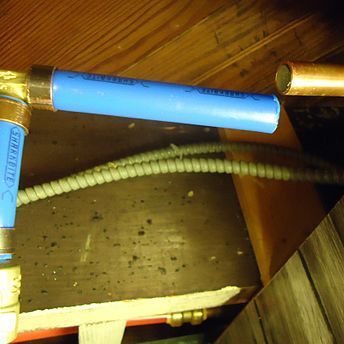
Hose Bib Replacement
Summertime is meant for enjoying the great outdoors. However, nothing can ruin an evening in the backyard like an outdoor plumbing leak. Not only are issues like a leaking exterior faucet difficult to track down for a homeowner, but they can also be costly if not caught in time.
Find out some of the possible culprits of an outdoor plumbing leak and what you can do to find the source of the problem!
What Does it Mean When Outdoor Plumbing Leaks?
Outdoor plumbing leaks are a homeowner’s nightmare because they can be the result of several different types of plumbing problems. If you notice a leak, it’s best to contact a licensed plumber to take over the situation and figure out the leak’s source and how to fix it.
Tracking Down the Source of an Outdoor Leak
The source of an outdoor plumbing problem can stem from issues like:
- Root damage
- Sprinkler damage
- Frozen pipes
- Damaged sewer line
Any combination of these plumbing problems could be why your outdoor plumbing is malfunctioning. Here are some things you can do to piece together which catastrophe has stricken your backyard.
Physically Check Your Exterior Faucets
A burst exterior water faucet could be the result of poor preparation before the last winter. Hoses left connected to spigots can cause water to freeze in the faucet and eventually lead to a pipe burst.
Unfortunately, repairing burst pipes and hose bibs are both complex jobs. Don’t rely on any DIY efforts to seal this leak. Reach out to a Carrollton plumber for emergency services.
Pinpoint Soggy Spots in Your Yard
Yes, your yard can quickly help you and your plumber figure out where a leak is located and what the potential problem could be. Leaks, soggy spots, and generally wet sidewalks are all signs that you have a water leak in your yard.
This sign points to either an irrigation problem or the main water line leak, which a local plumber will quickly be able to source.
Check Your Water Meter
Sometimes you may not notice the physical signs of a leak but experience the financial red flags. If you notice a sudden surge in your water bill, the best way to solve the mystery is through your water meter. Before checking your meter, make sure no water is being used inside or out.
Your meter has a leak indicator on it. Once you’ve located your water meter, check to see if this indicator is moving. It will rotate when water is moving through your system. If you see this happening, and no water is currently in use, you most likely have a leak.
At this point, you should call an emergency plumber to help you determine where the leak is located and if it is impacting your indoor or outdoor plumbing.
Plumbing Dynamics Helps Keep Your Outdoor Plumbing Under Control
Don’t let outdoor plumbing problems ruin your summer. Let the experts at Plumbing Dynamics help. Indoor and outdoor plumbing emergencies are our specialties, and we are ready to put our experience to the test. Contact us today to find out more about our services in your area.
For hose bib replacement in Carrollton, TX call 214-929-3431!









